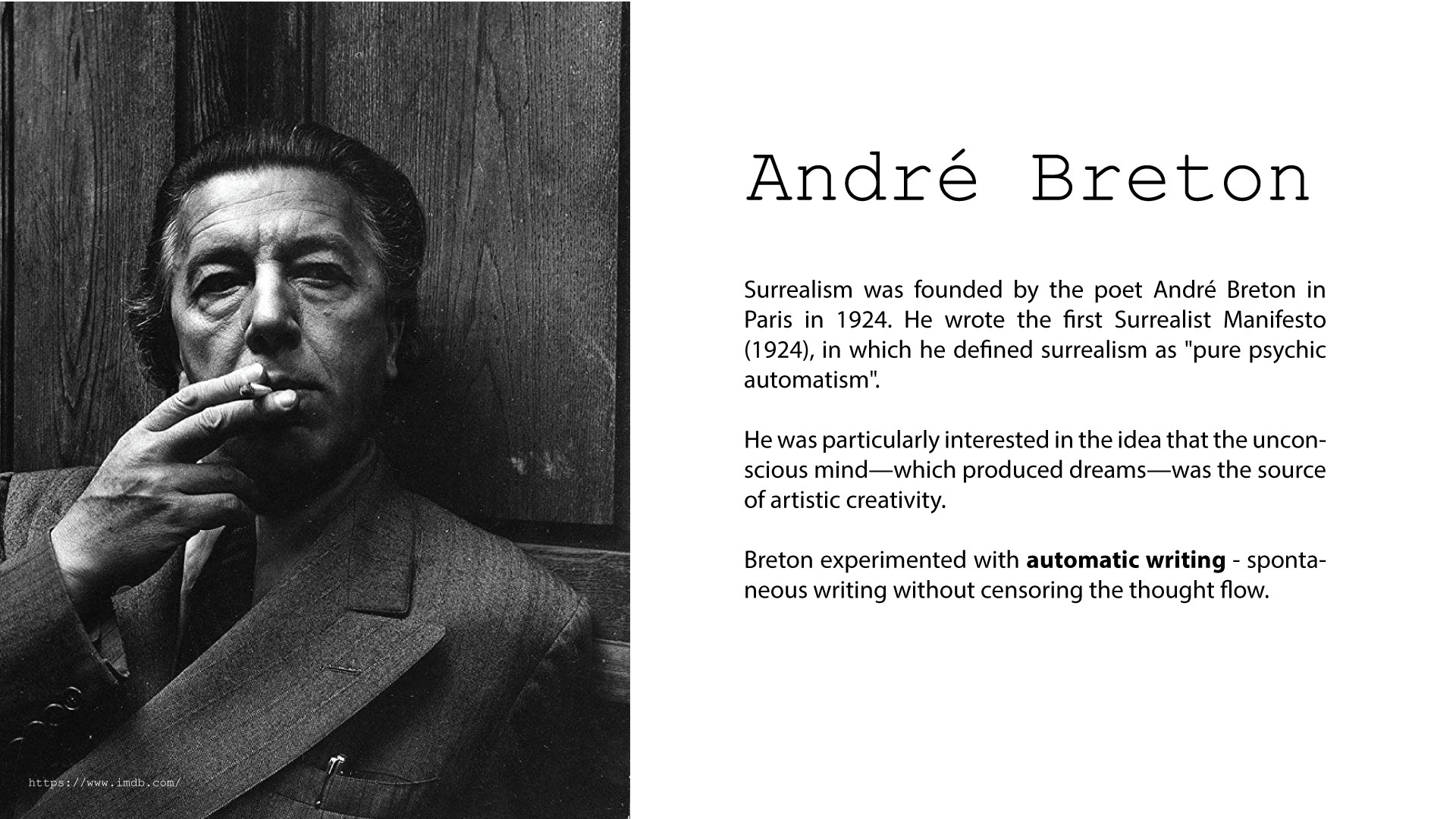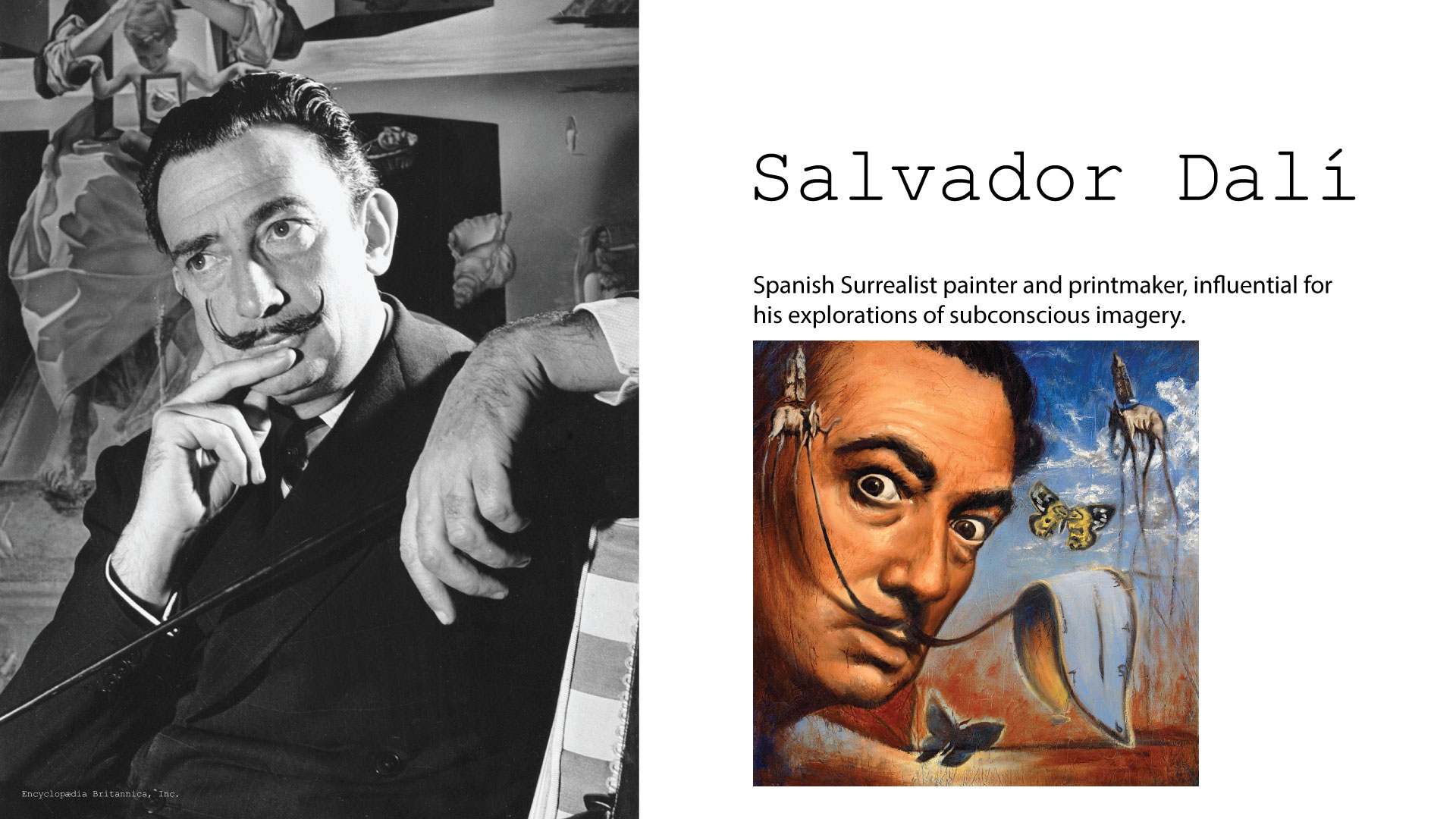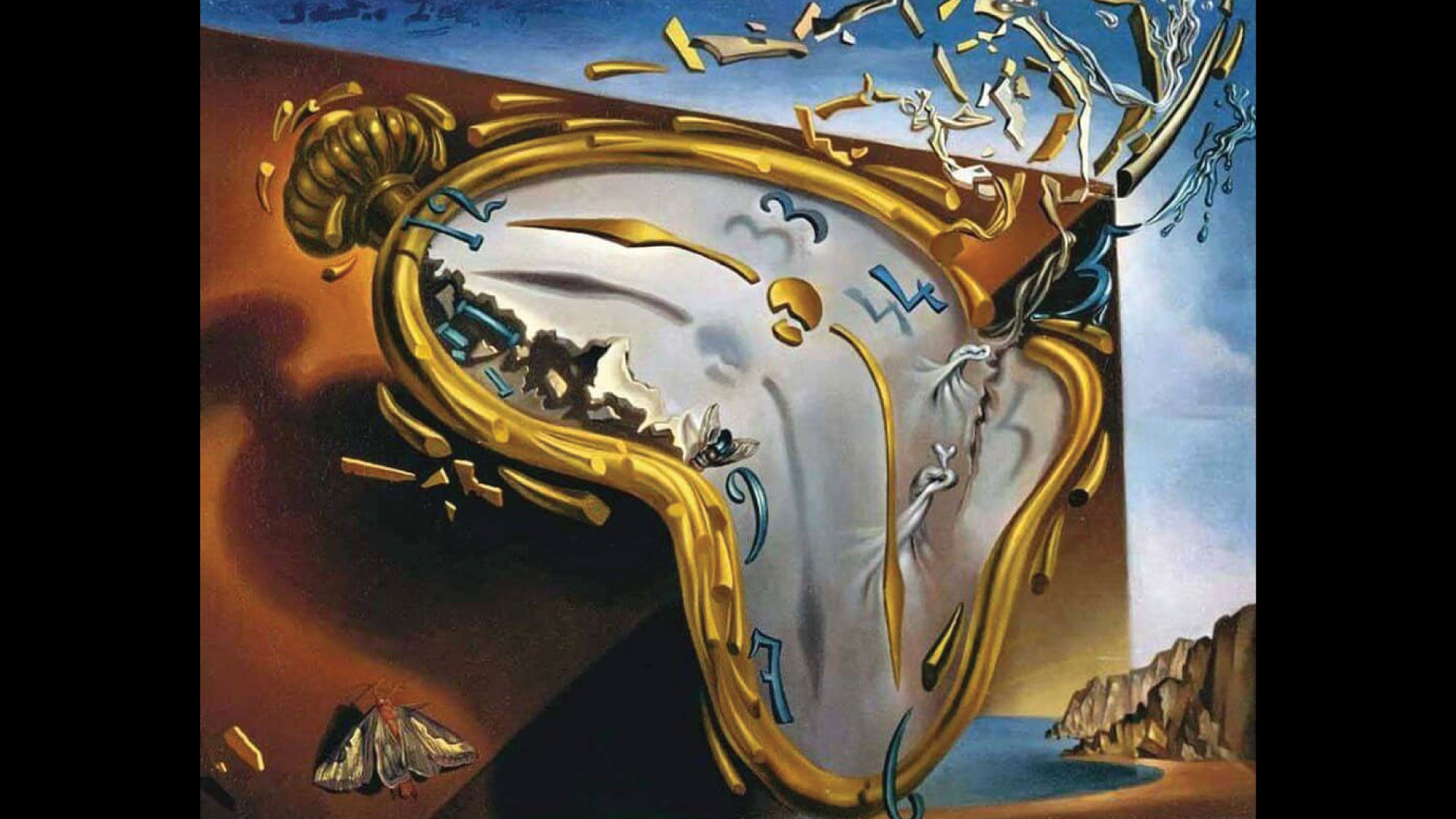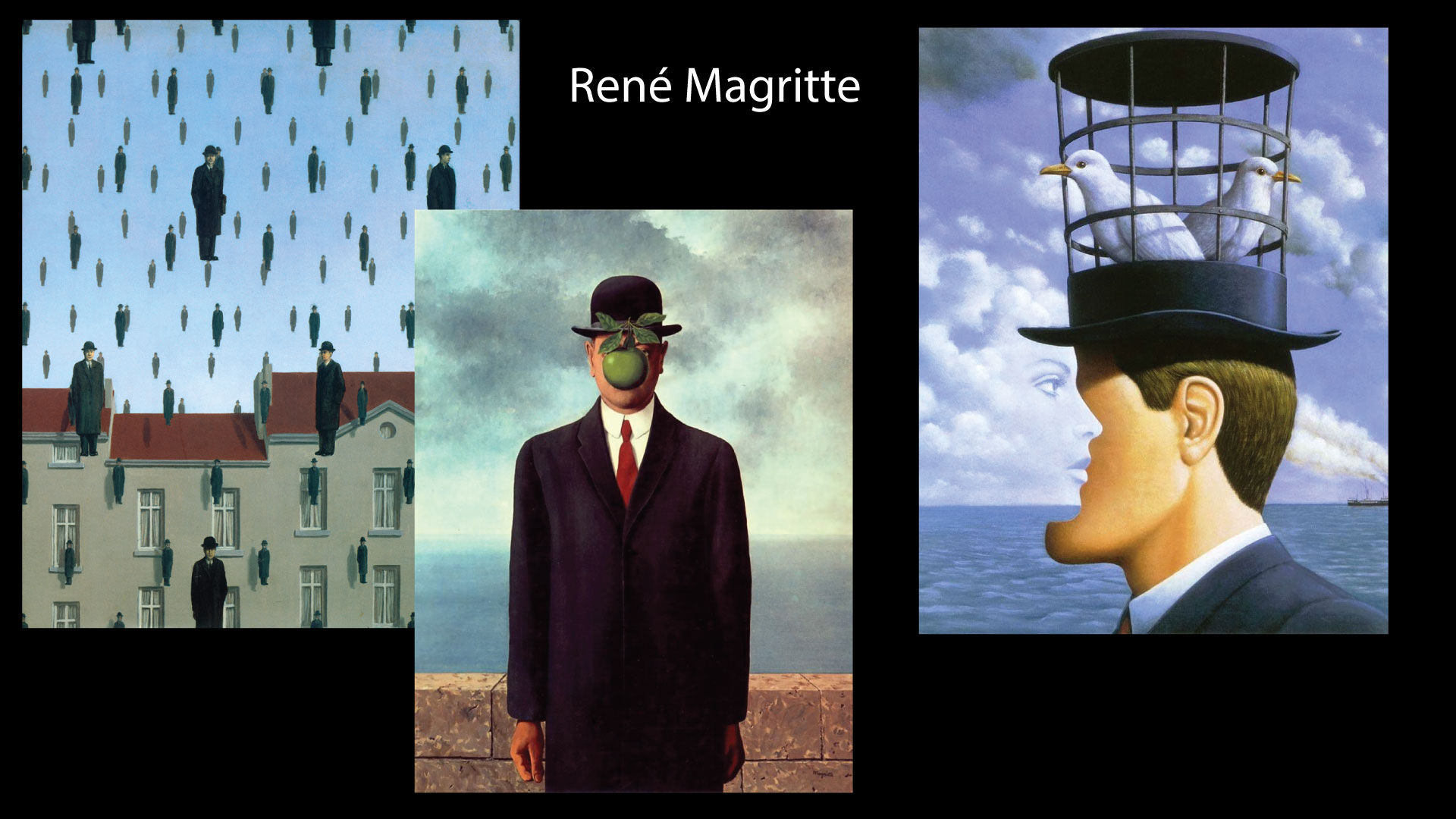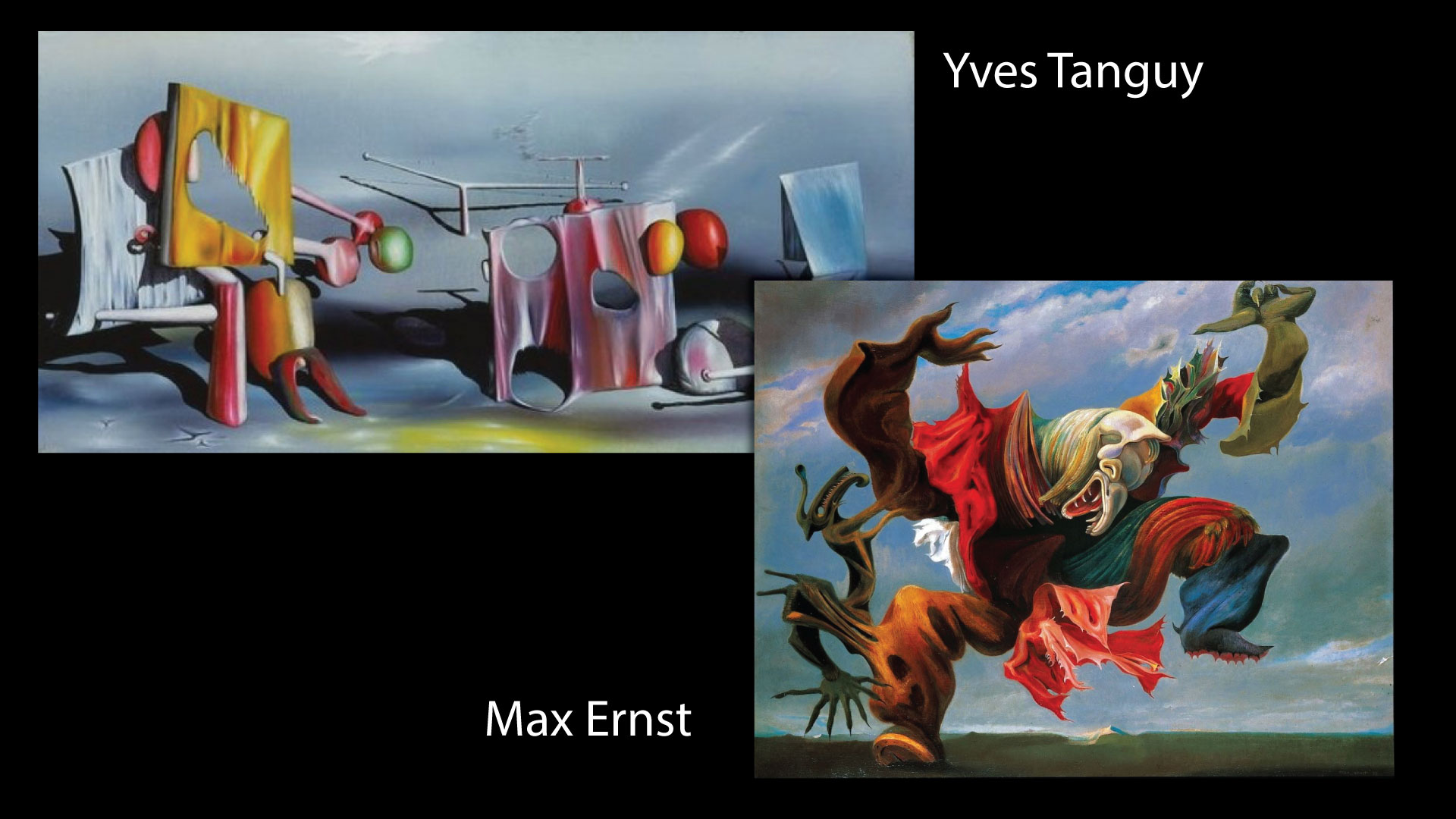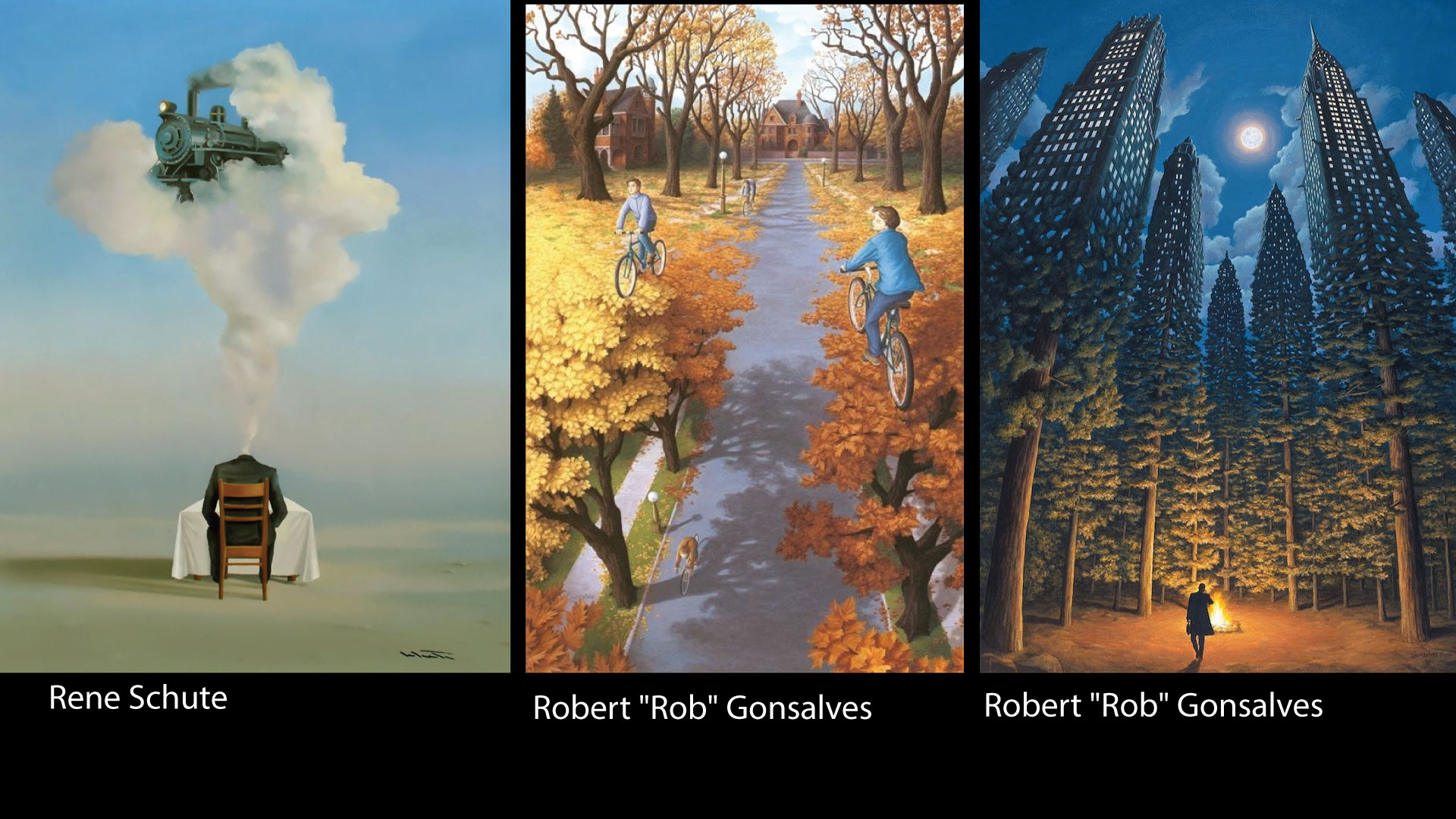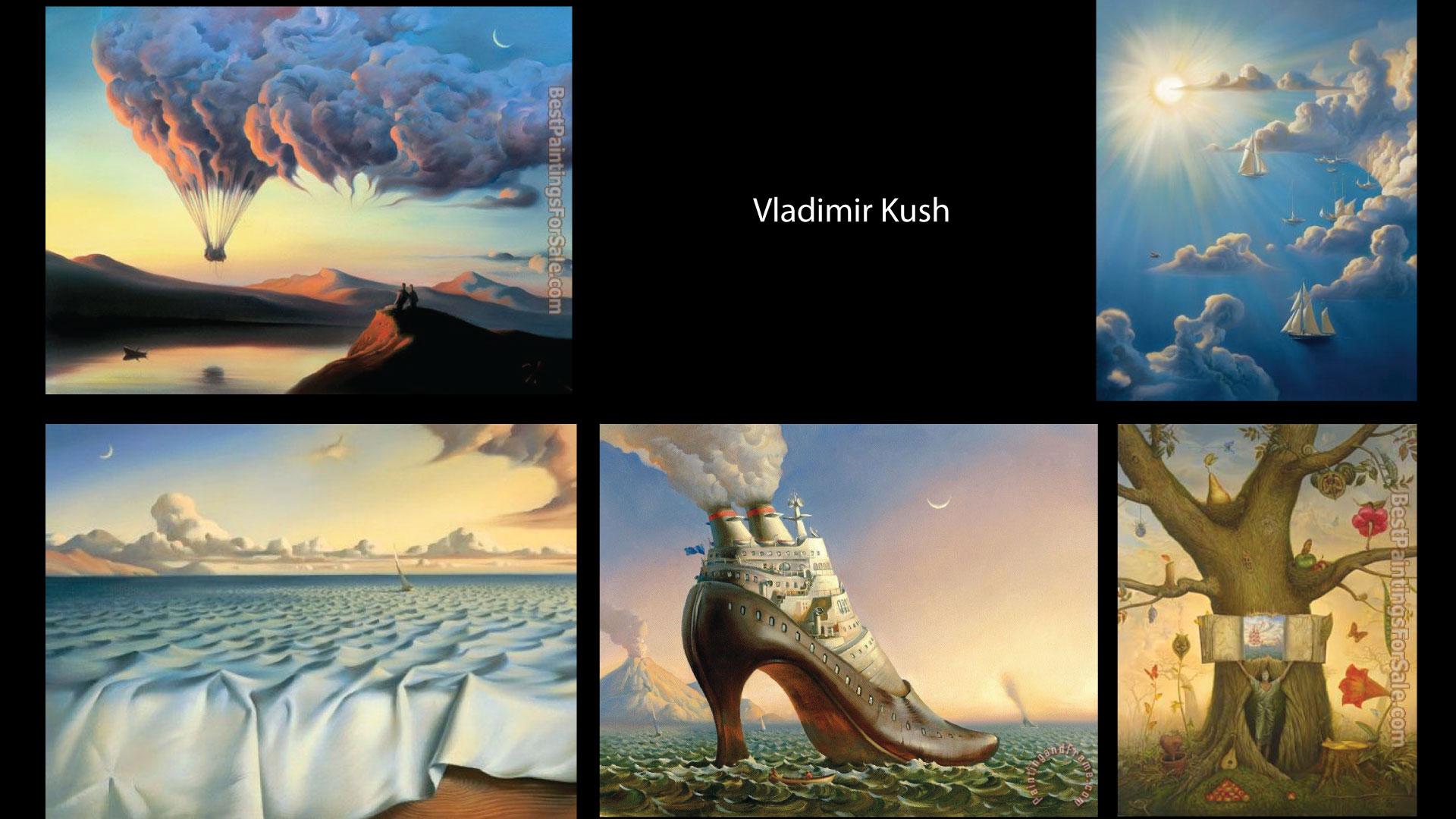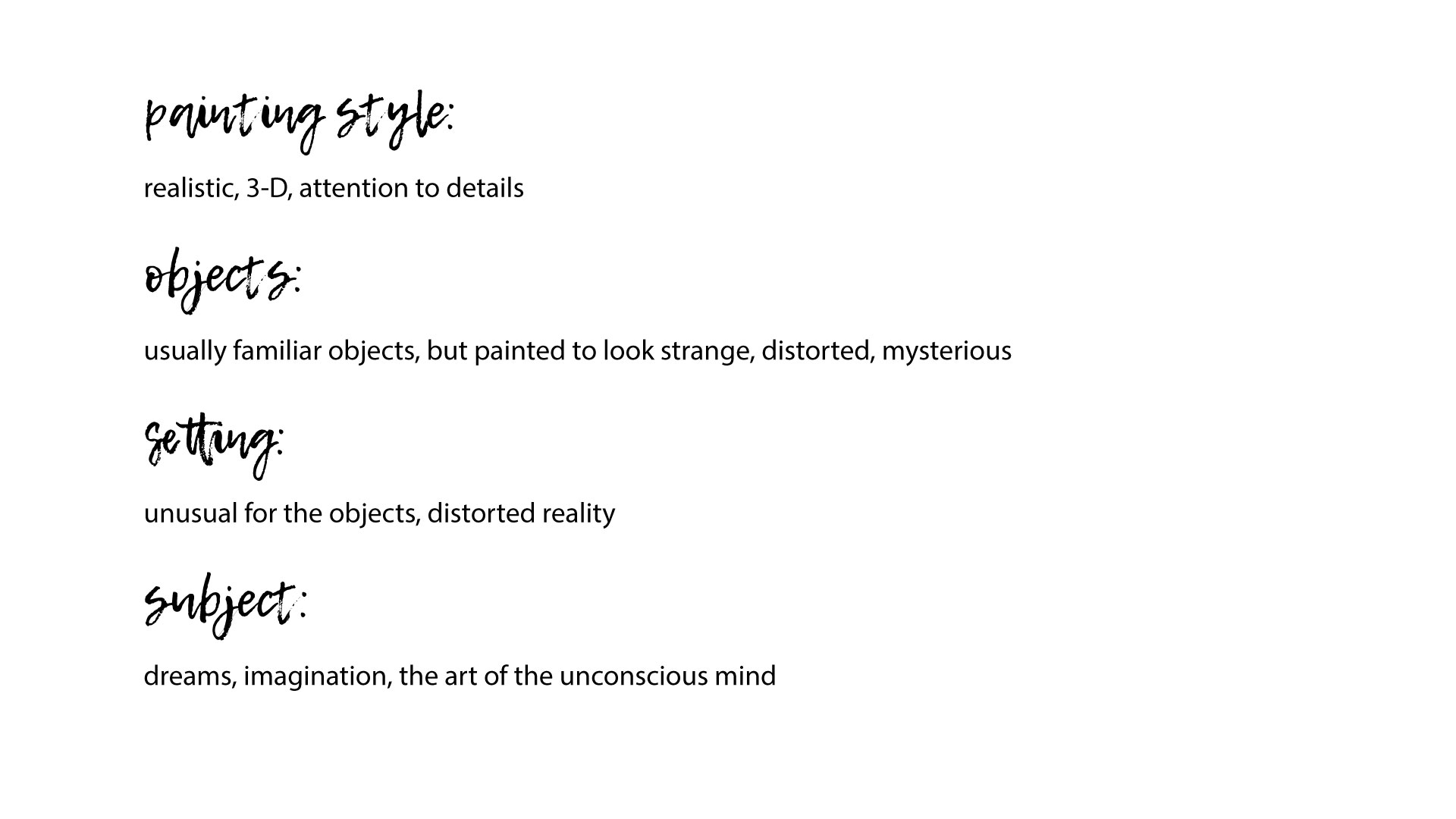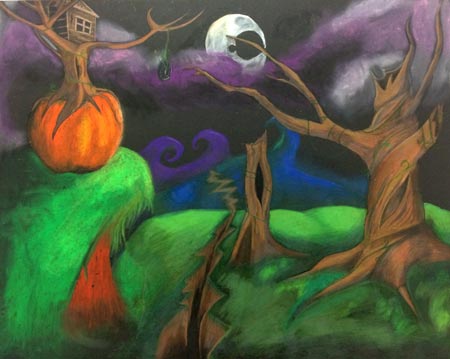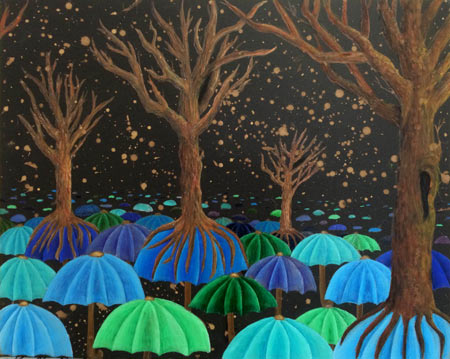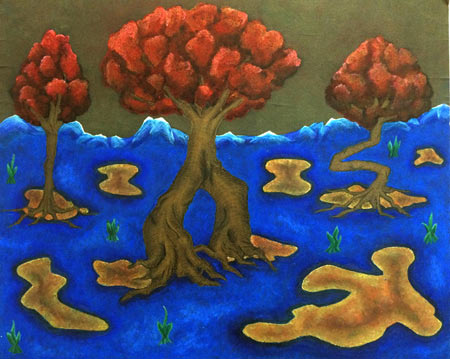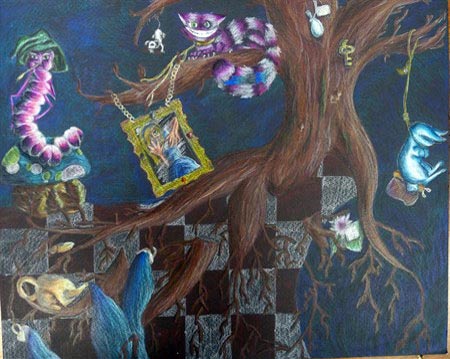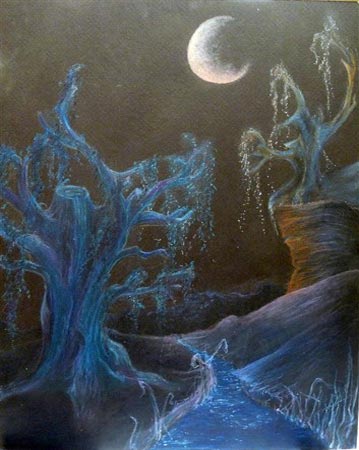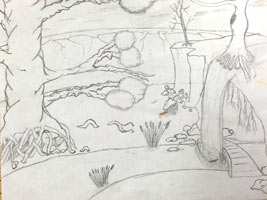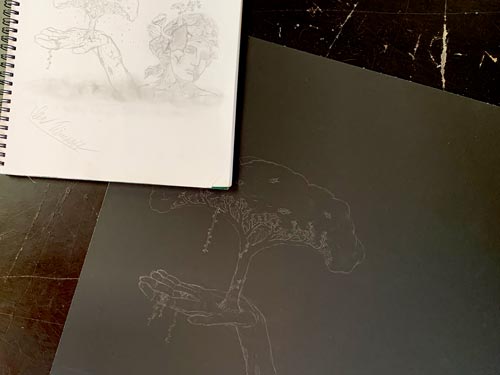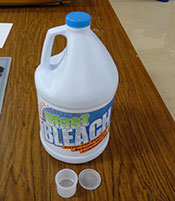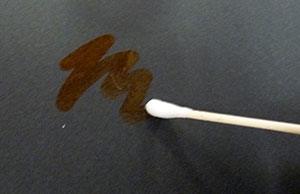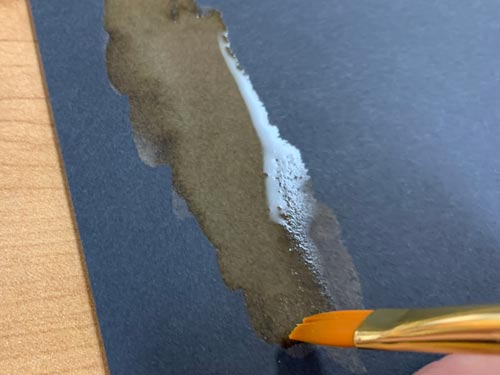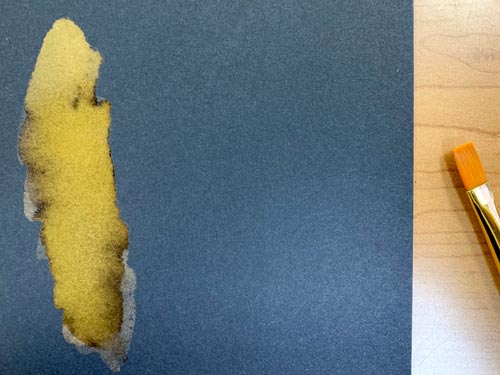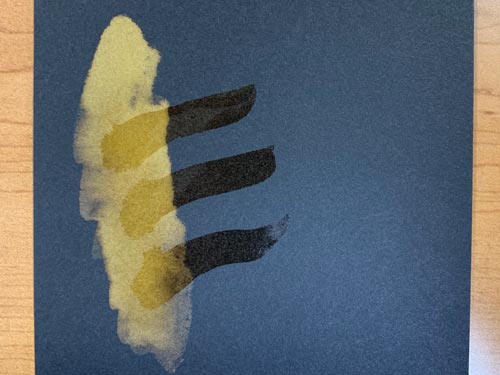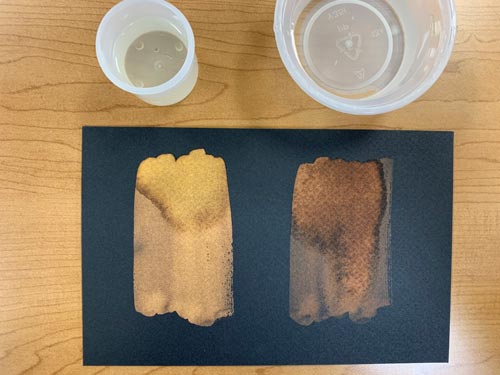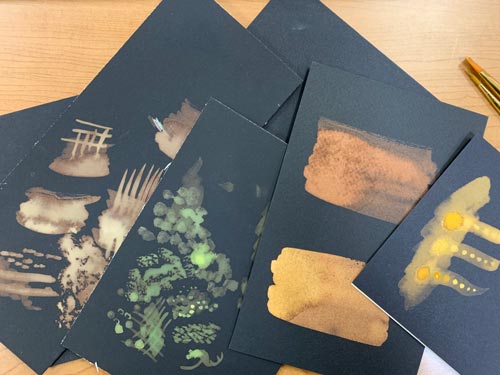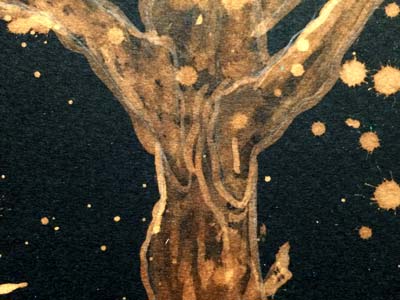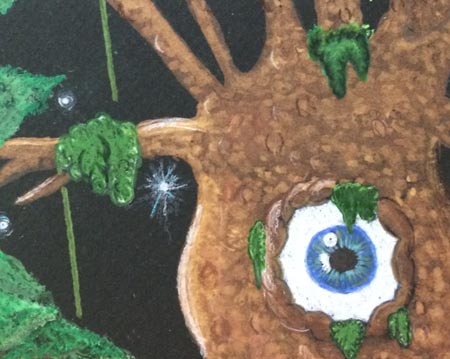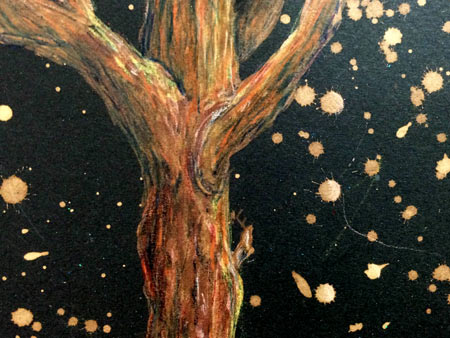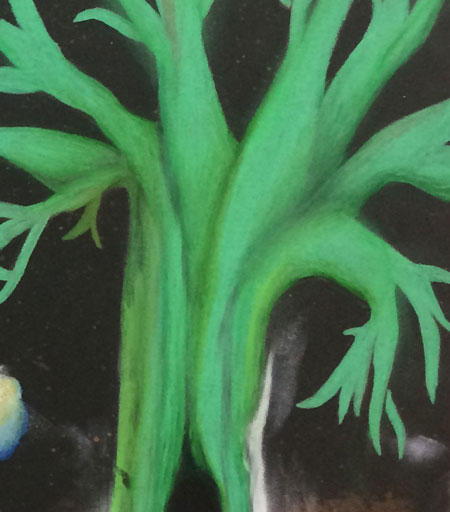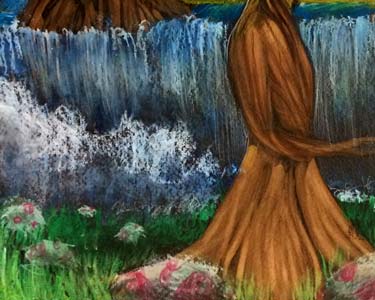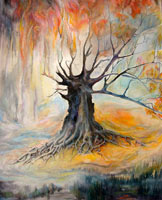
Draw a surrealist landscape that includes:
- Depth - background, middle-ground, and foreground
- At least three trees
- All objects should look three-dimensional and realistic in appearance
- Drawing should be surrealistic in nature - dream-like subject matter
Media to use:
- Black illustration board
- Bleach
- Oil pastels
- Colored pencils
Visual characteristics of surrealism are:
- The element of fantasy
- Metaphysical atmosphere
- Dreamlike imagery depicting mysterious environments and landscapes
- Representation with almost photographic precision. Hyper-realistic rendering of form and volume
- A distortion of reality with contradictory elements and random associations
- Eccentric, shocking, and mysterious
- Eerie creatures and fantastical forms from everyday objects
- The use of the visual form to express and translate the unconscious
- Experimental techniques and forms such as collage, mixed media, doodling, etc.
WI State Standards:
- AA Cr11h
Plan: Formulate original concepts by practice, experimentation, and revision. (planning/experimentation) - AA Cr12h
Make: Create works of art that introduce students to media, care of tools, and basic craftsmanship skills.
(skills) - AA Pr10h
Develop Meaning: Curate a body of work incorporating personal, historical and contemporary art to communicate one or more points of view.
(aesthetics / communication)
Learning targets:
- Use planning (sketching) to develop a unique outcome
- Create an original artwork
- Combine multiple media to achieve an aesthetic effect.
- Learn about surrealism
- Create an art piece in surrealistic style
- Exercise drawing trees
- Learn to paint with bleach
- Learn to achieve a necessary value using bleach over a black surface
- Learn to apply highlights and shadows on a black illustration board
- Learn to use oil pastels and pencils to add depth
- Exercise and demonstrate use and mastery of the elements of art
- Exercise and demonstrate use and mastery of colored pencil drawing and shading techniques
- Demonstrate understanding of color values and chiaroscuro pattern.
in a nutshell
1. Standard AA Cr11h (planning/experimentation): Start with sketching. Come up with a theme that would involve trees. Draw thumbnails of multiple ideas and approaches. Consider transforming trees into something else. This is your most creative part of the assignment.
2. Standards AA Cr12h (skills): Make sure you use all required media in a proper way. Practice it, experiment with it. Application of the media is important to achieve a realistic (surrealistic) feel.
3. AAPr10h (aesthetics/communication): Make sure there is a "twist" in your landscape that communicates "surrealism"!


